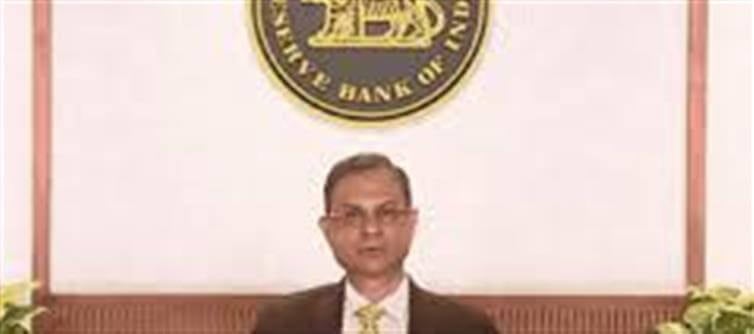
In its latest review of the indian economy, the Reserve bank of india (RBI)’s Monetary Policy Committee (MPC) has revised the country’s GDP growth forecast for the fiscal year 2025-26 to 6.8%, signaling a more optimistic outlook for the future. Governor Sanjay Malhotra shared this updated growth expectation during the MPC's october 2025 meeting, providing insight into how the RBI views India’s economic trajectory in the coming months. Here's a breakdown of the key highlights and implications of this update:
1. Revised GDP Growth Estimate: 6.8% for FY26
The RBI’s MPC has upgraded its GDP growth estimate for the year 2025-26 from a previous forecast of 6.5% to 6.8%. This adjustment reflects stronger-than-expected performance across several sectors of the economy, including manufacturing, services, and agriculture, despite global uncertainties. The revised growth projection is a signal of confidence in India’s economic resilience.
2. Positive Economic Indicators: What’s Driving the Growth?
· Domestic Demand: Consumer spending and investment are picking up, particularly in sectors like retail, infrastructure, and technology, contributing positively to the overall GDP.
· Manufacturing Boom: The government’s push for Make in India initiatives and increased export demand has bolstered the manufacturing sector, which has been showing signs of recovery.
· Agriculture: Good monsoon seasons and improved crop yields are helping the rural economy, contributing to the overall growth.
3. Inflation Projections: Still Under Control
Governor Sanjay Malhotra also addressed inflation in the MPC's statement, confirming that the central bank is closely monitoring price levels. While inflation remains a concern globally, the RBI expects India’s inflation to remain under control, thanks to effective monetary policies, better supply chains, and stable food prices. The bank aims to maintain inflation at 4%, which is within its comfort zone.
4. Growth Sectors: Which Areas Are Leading the Charge?
Several sectors are expected to be key drivers of India’s 6.8% GDP growth:
· Services Sector: With a rebound in demand for travel, tourism, and tech services, this sector continues to contribute heavily to the economy.
· Infrastructure: Investments in roads, railways, and housing projects have provided a strong base for growth.
· Exports: An uptick in exports, particularly in pharmaceuticals, IT, and textiles, has helped india weather external economic challenges.
5. Global Factors: A Mixed Outlook
While India’s growth forecast is positive, the RBI’s MPC has acknowledged global headwinds:
· Global Inflationary Pressures: Rising oil prices and supply chain disruptions are still concerns that could impact domestic inflation.
· Geopolitical Risks: Ongoing geopolitical tensions and their impact on global trade and investment may also influence India’s growth, though the country’s economy is seen as relatively resilient.
6. RBI’s Policy Approach: Focus on Growth and Stability
The RBI has maintained a cautious but optimistic stance. While keeping inflation under control is a priority, the central bank is focused on ensuring that monetary policy continues to support growth. The repo rate, which influences borrowing and lending costs, will remain under careful review to ensure that economic activity continues to thrive while inflation is kept in check.
7. What Does This Mean for Borrowers and Investors?
For borrowers, the unchanged repo rate could mean stable interest rates for the time being. While the economy shows promising growth, the RBI is expected to keep rates steady unless there are significant inflationary pressures. For investors, the GDP growth revision is a positive sign, suggesting a healthy economic environment with opportunities in sectors like infrastructure, services, and exports.
8. Future Expectations: A Focus on Sustainability
The MPC highlighted that while the 6.8% growth projection is encouraging, the focus will also remain on ensuring that the recovery is sustainable in the long term. Efforts to boost green energy transitions, digital innovation, and human capital development are expected to play an increasingly significant role in maintaining robust growth beyond FY26.
9. What’s Next for the indian Economy?
The RBI’s growth estimate for FY26 signals confidence in India's resilience despite external risks. Moving forward, the central bank will likely continue to monitor inflation closely while fostering an environment conducive to sustained growth. The outlook for 2025-26 is optimistic, with expectations of steady recovery across sectors and an economy poised to meet its potential.
In summary, the RBI’s decision to revise the GDP growth estimate to 6.8% for FY26 is a sign of growing confidence in India’s economic recovery. With robust domestic demand, a thriving services sector, and a focus on infrastructure, the country is on track for solid growth, even amidst global uncertainties. The coming months will be crucial in sustaining this momentum.
Disclaimer:
The views and opinions expressed in this article are those of the author and do not necessarily reflect the official policy or position of any agency, organization, employer, or company. All information provided is for general informational purposes only. While every effort has been made to ensure accuracy, we make no representations or warranties of any kind, express or implied, about the completeness, reliability, or suitability of the information contained herein. Readers are advised to verify facts and seek professional advice where necessary. Any reliance placed on such information is strictly at the reader’s own risk.
.jpg)




 click and follow Indiaherald WhatsApp channel
click and follow Indiaherald WhatsApp channel